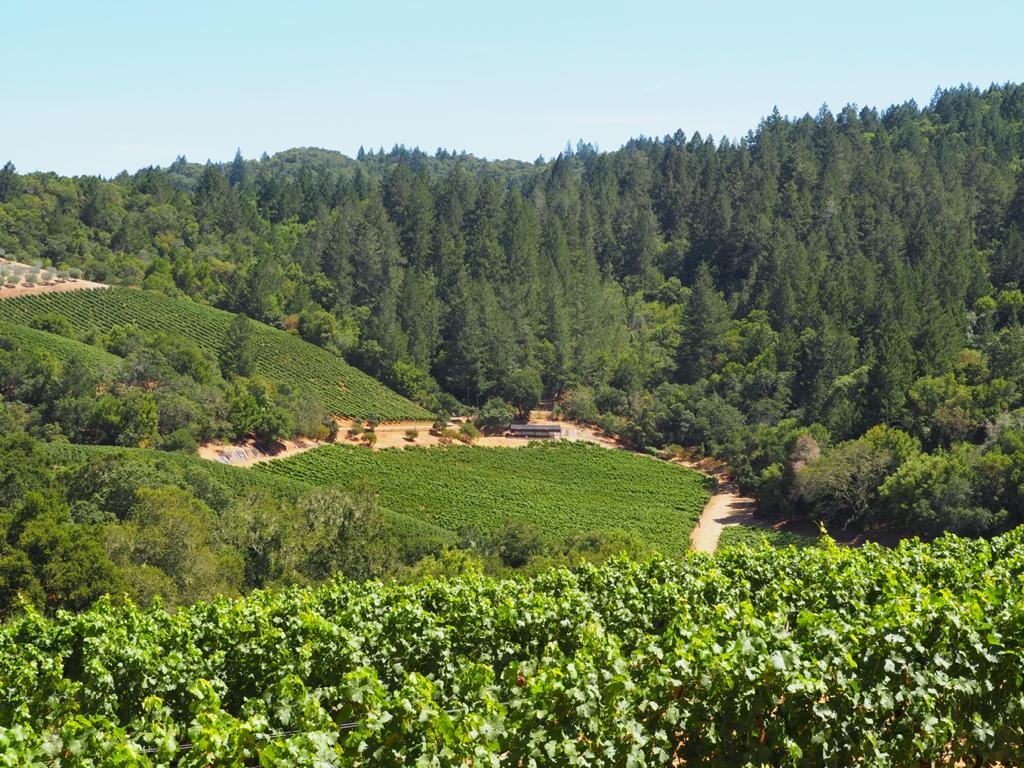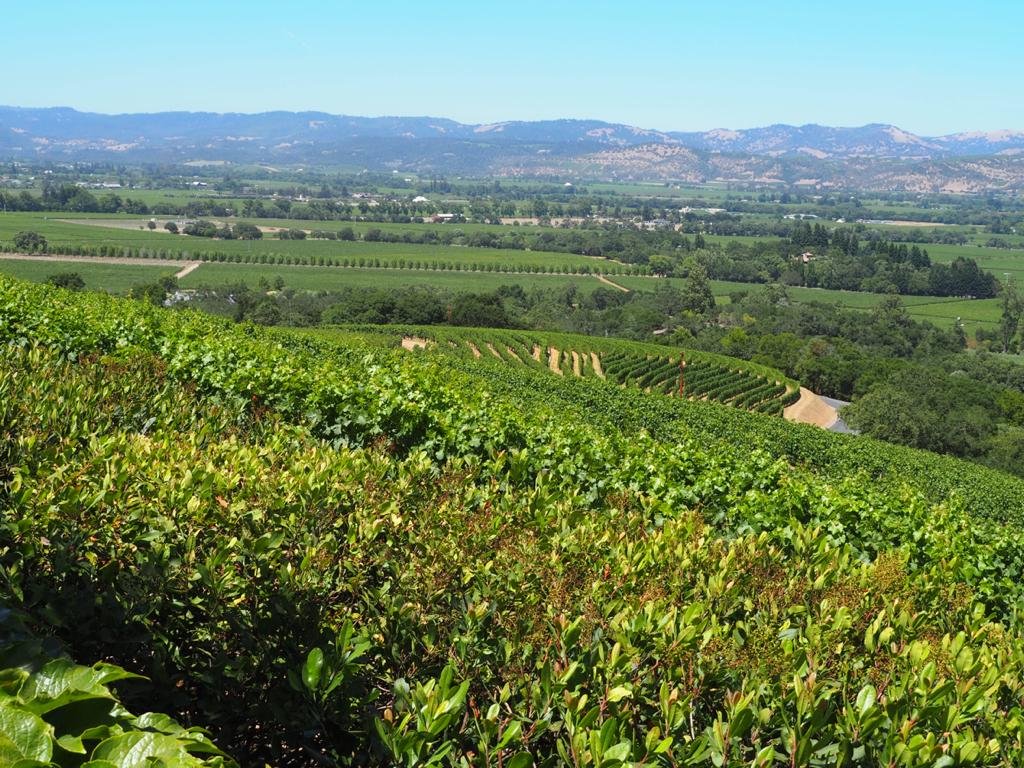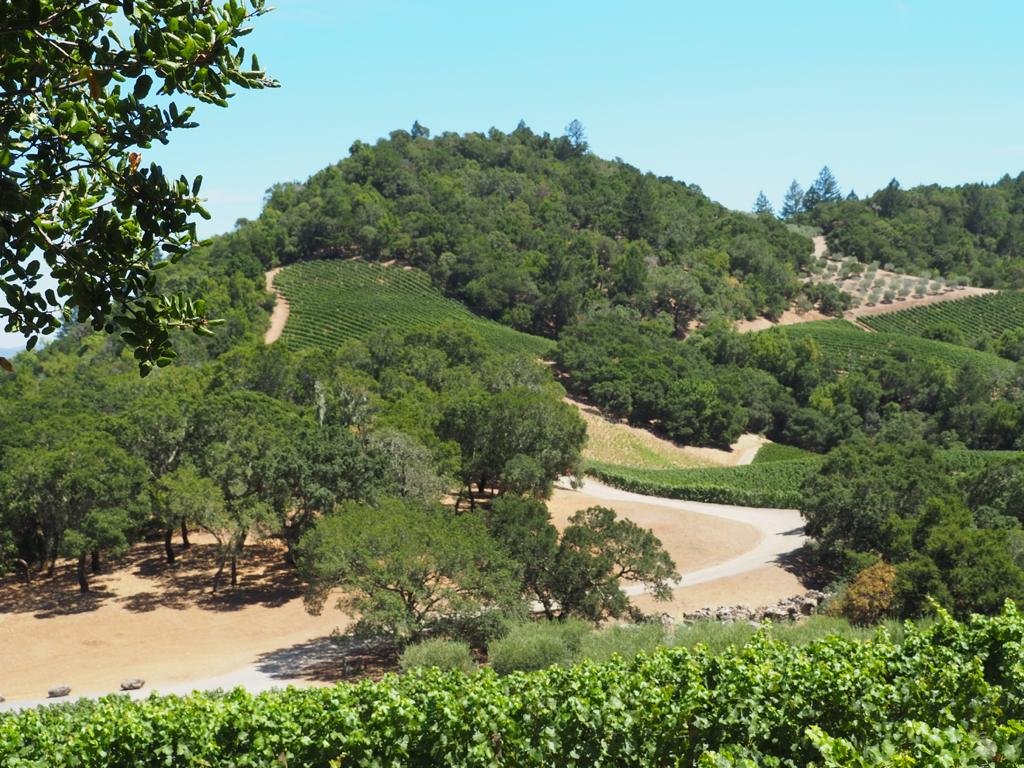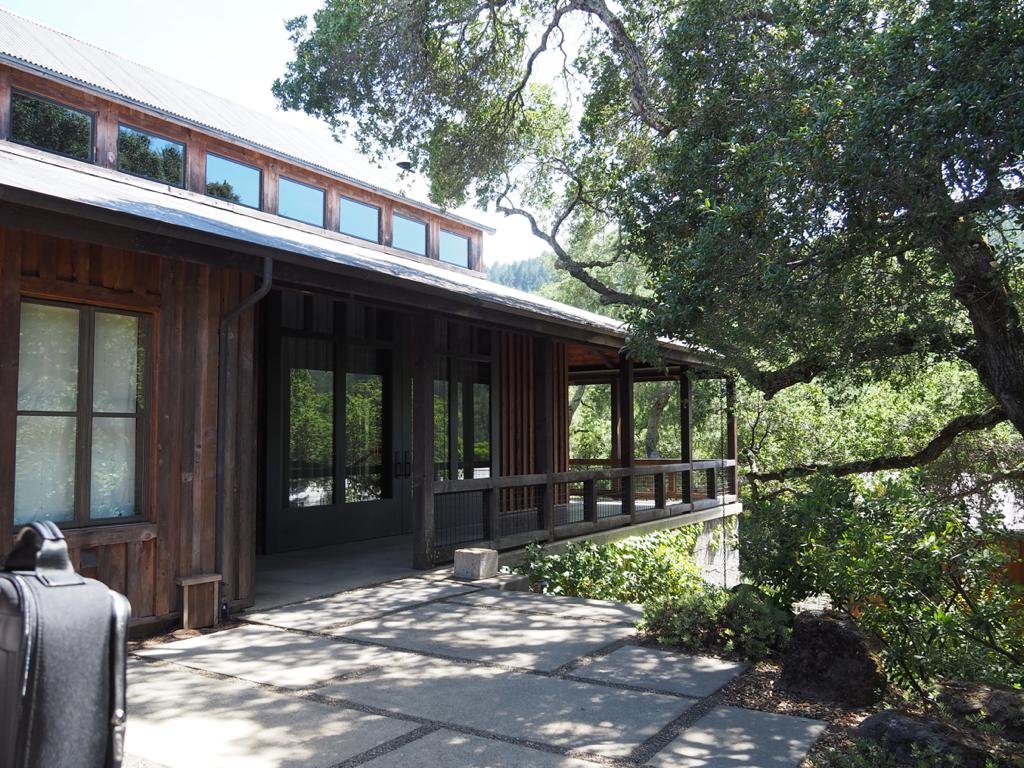Harlan estate a close look..
ARRIVAL IN NAPA VALLEY
After traveling a few miles on asphalt covered roads, you finally enter this wonderful green valley which is considered the home of the most renowned American wines. The first town you come to from the south is Napa. The road divides into two: St. Helena Hwy and Silverado trail. Traveling towards St. Helena, we passed Oak Knoll and Yountville (home of the great American restaurant French Laundry) to arrive at the junction in Oakville. Turning west, you climb in to beautiful hills. Between one curve and another, immersed in the majestic vegetation of the landscape, some vineyards can be seen in the distance. A little further, surrounded by vineyards we arrived in front of the main gate. Once through the gate, you are in a earthly paradise, wrapped in eternal quiet. The sun beats down and warms the ground while behind a mountain, wind penetrates the forests and blows vigorously on the vineyards. These sensations that reflect a solemn, and powerful landscape. This is the perfect setting to grow and produce one of the best wine all over the world.
Napa Valley
THE Vineyards
The Harlan vines are planted with the VP (Vertical positioning) system and are train to take root in less than a foot of depth. After that, they begin to fight to get deeper and deeper. During their journey, depending on where they were planted, they will find volcanic debris or sandstone. Harlan Estate can be divided into East block and West block. Where the volcanic rocks in the east are hard and young and the sandstone in the west is soft and old. Each vine has 360 ° sun exposure. The younger vines (from 5 to 7 years) are exuberant and produce a large amount of fruit which they find difficult to feed properly. On the contrary, the older vines, which are vigorous, have a constant and perfect yield. This biodiversity and the integration between old and new, even among staff members, is considered one of the strengths of the company.




THE HISTORY OF HARLAN ESTATE
Founded in 1984 by Bill Harlan, the company is located between 225 and 1,225 feat (69 to 373 M) above sea level. Behind the hills on which it was founded, the Mayacamas Mountains rise. The property has 240 acres (97 hectares), of which only 40 acres are vines (17 hectares). The vines planted are cabernet sauvignon (70%), merlot (20%), cabernet franc (8%), and petit verdot (2%). The first 24 acres were planted in 1986-1987 divided between two hills. In 1990 another 14 acres were planted, approximately. Looking out from the terrace overlooking some of the vineyards adjacent to the company, it is immediately clear that this place has a story to tell and mysteries to discover. The history of these hills goes back hundreds of millions of years. The formation of the land is due to a myriad of tectonic displacements and an uninterrupted succession of volcanic eruptions. Some of the most interesting research is reported by Jonathan Swinchatt (world-renowned geologist) who declares: “Harlan Estate is different from any other estate in Napa Valley, and from any other place in the world.”
THE Wine Cellar
The cellar is sublime! It is barely noticeable, as it is hidden by trees as if it were an integral part of the hill, but somehow also as if it had always presided over that ridge. Wood and iron link it to the elements that surround it: the forest and volcanic soil. The first room is dark, with a thread of light that penetrates from some windows close to the ceiling. All around, large steel and oak barrels for a first fermentation. Going down some stairs and passing a door; we find ourselves in the barrel cellar. The barrels, strictly barriques, are arranged in an orderly manner on two small rectangular rooms. Here rests the wine of the current vintage waiting to be moved elsewhere, where it will be bottled. Entering the Hill House, the company's main office, you are struck by the informal tone. There is no real tasting, room but an elegant lounge where there is no shortage of books on wine, agriculture, and architecture. In the center, rests two sofas and a beautiful dark brown, oak table that is similar to the color of the infrastructure.
In the back, there is a small kitchen with a multitude of glasses and a few decanters.
Wine tasting
The first glass is a Harlan Estate 2017 served by the barrel in the cellars.The wine appears dressed in a deep ruby red with violet reflections. The nose refers to sweetness and vanilla thanks to the use of barrique. It releases aromas of black raspberry, rhubarb, wild blueberry and balsamic notes wrapped in chocolate and coffee. On the palate it has a crunchy fruit with an extended tannin, medium body and followed by a lashing note of final acidity.
The second wine poured is Harlan Estate 2015. It fills the glass with its sumptuous dark ruby color and blood red reflections. It releases fragrances of custard, black currant, blackberry in season and spices such as Serawak pepper and cloves. Finally a sweet hint of balsamic vinegar cream. In the mouth it is (tyrannical-despotic) imperious! It attacks the taste buds by surprise and leaves no prisoners, a real Trojan Horse. The aromas are repeated with a few more nuances: pomegranate, red currant, coffee beans and cocoa powder. One of its great qualities is a marked acidity that leads to another sip. The tannic texture is amazing, with perfectly integrated alcohol. It is a structured wine with a deep and persistent finish.
This adventure and this wine brought to mind a famous phrase by Charles Baudelaire who said: "Nothing equates the joy of the man who drinks, if not the joy of the wine of being drunk."







